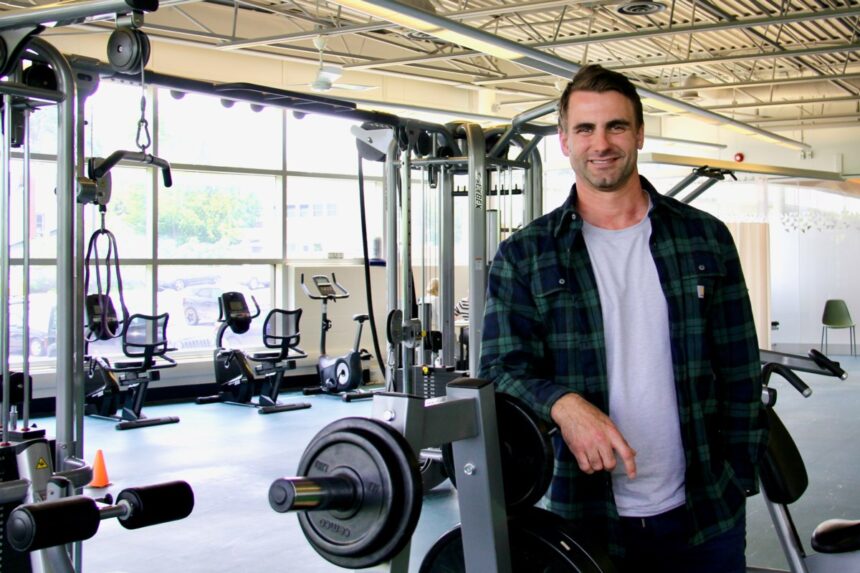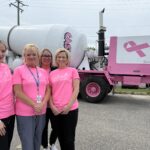The transformation of Orillia’s former YMCA building into a comprehensive health hub marks a significant milestone for local healthcare accessibility. Walking through the newly renovated facility last week, I couldn’t help but notice how the space that once echoed with swimming lessons and fitness classes now buzzes with a different kind of community energy.
The Orillia Health and Wellness Centre has breathed new life into the Peter Street location, creating what officials are calling a “one-stop shop” for various health services. As someone who’s reported on community development projects across the province, this particular renovation stands out for its thoughtful repurposing of a beloved community landmark.
“This is exactly what our community needed,” said Mayor Don McIsaac during the official opening ceremony. “Taking a building with such history and transforming it into a space that will continue to serve residents, just in a different capacity.”
The centre now houses Couchiching Family Medicine, which relocated from its previous West Street office, bringing with it a team of physicians and healthcare practitioners. Dr. Kim McIntosh, lead physician at the clinic, told me the move represents more than just a change of address.
“We’ve been able to expand our services and create a more welcoming environment for patients,” McIntosh explained as she showed me around their new facility. “The additional space means we can see more patients and reduce wait times, which has been a persistent challenge across Ontario.”
According to Simcoe County health services data, approximately 15% of Orillia residents lacked access to primary care before this expansion. The new centre aims to significantly reduce that number through increased capacity and service integration.
Perhaps most innovative is the inclusion of the Simcoe Muskoka District Health Unit’s dental clinic within the building. This marks the first time dental services for low-income families have been offered in such close proximity to primary care in the region. The clinic primarily serves children and youth under the Healthy Smiles Ontario program, a crucial service in a community where Statistics Canada reports nearly 20% of children live in low-income households.
“Having dental care in the same building as family doctors creates opportunities for more comprehensive care,” explained Janice Crawford, public health dental hygienist. “We often see children with untreated dental issues that affect their overall health, and now we can facilitate easier referrals between services.”
The renovation itself represents a $4.3 million investment, with funding coming from municipal, provincial, and private sources. The City of Orillia contributed approximately $1.8 million to the project, viewing it as an investment in community wellbeing rather than simply a real estate venture.
What struck me during my tour was how the architects managed to preserve elements of the building’s history while adapting it for modern healthcare needs. The main reception area, once the YMCA’s front desk, maintains its central positioning but now directs visitors to various health services rather than fitness programs. The former gymnasium has been converted into a spacious waiting area that still features the original wooden flooring, now restored and polished.
“We wanted to honor what this building meant to generations of Orillians,” explained project architect Sarah Thornton. “Many people learned to swim here or attended summer camps. Now they’ll continue building healthy lives in a different way.”
Beyond the physical transformation, the centre represents a shift in healthcare delivery models. By housing multiple services under one roof—family medicine, dental care, mental health counseling, and laboratory services—the facility embodies the integrated care approach that health policy experts have advocated for years.
Dr. Vanessa Marshall, family physician and health policy researcher at Lakehead University, believes this model could serve as a template for other communities.
“What we’re seeing in Orillia addresses several barriers to care at once,” Marshall told me in a phone interview. “Transportation challenges are reduced when patients can see multiple providers in one location. Information sharing improves when practitioners work in proximity to each other. It’s a practical solution to fragmented care.”
Community reaction has been largely positive, though some residents expressed initial concerns about parking availability and potential traffic congestion on Peter Street. The city has responded by expanding parking options and implementing a new traffic management plan for the area.
While touring the facility, I met Margaret Wilson, an 82-year-old Orillia resident who remembered taking her children to swim lessons at the YMCA decades ago. “It’s different, for sure,” she remarked, “but I’m pleased it’s still serving the community. And frankly, at my age, I need doctors more than I need a swimming pool.”
The centre also represents a potential economic boost for downtown Orillia. With approximately 40 staff members working at the facility and hundreds of patients visiting daily, nearby businesses anticipate increased foot traffic. The local Business Improvement Association estimates that healthcare-related facilities typically generate significant spillover economic activity for surrounding areas.
As Orillia continues to grow—the city saw a 4.3% population increase in the last census—the demand for accessible healthcare services grows with it. The Health and Wellness Centre addresses this need while simultaneously solving the problem of what to do with a prominent vacant building.
For a community journalist who has covered numerous ribbon-cuttings and facility openings, what makes this project noteworthy is how it represents the intersection of heritage preservation, healthcare innovation, and community needs. The building that taught generations of Orillians to swim will now help keep them healthy in new ways.
As Mayor McIsaac put it during his remarks: “This building has always been about building a stronger, healthier community. That mission continues today, just in a different form.”






